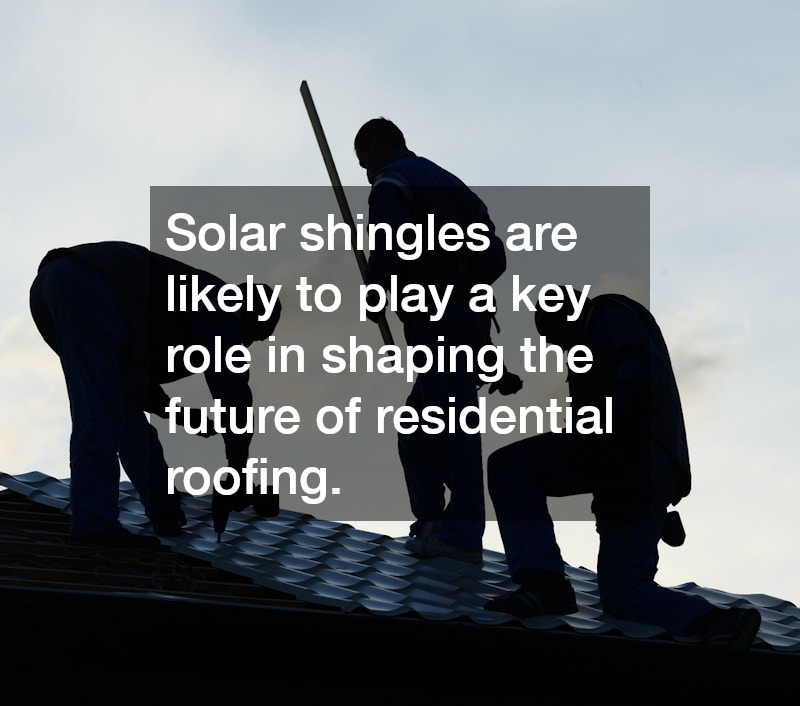The rise of renewable energy has transformed the way homeowners think about their rooftops. Once seen as a mere protective layer, the roof is now an opportunity to generate electricity and reduce energy bills. Among the most innovative solutions available today are solar shingles, a sleek and efficient alternative to traditional solar panels. These shingles blend seamlessly with your roof while harnessing solar energy, offering both aesthetic appeal and environmental benefits. In this article, we’ll explore why solar shingles are gaining popularity, how they work, and what makes them a viable choice for energy-efficient homes.
What Are Solar Shingles?
Solar shingles, also known as photovoltaic shingles, are roofing materials designed to function as both a roof covering and a solar energy generator. Unlike traditional solar panels, which are mounted on top of an existing roof, solar shingles integrate directly with standard roofing materials, such as asphalt or metal.
This integration allows homeowners to maintain the visual appeal of their home without the bulky appearance of conventional solar panels.
One of the key advantages of solar shingles is their ability to capture sunlight and convert it into electricity efficiently. Modern designs use advanced photovoltaic technology to ensure optimal energy production, even in less-than-ideal weather conditions. For homeowners interested in sustainable living and long-term savings on electricity bills, solar shingles provide a seamless solution that combines functionality and style.
Benefits of Installing Solar Shingles
Installing solar shingles offers numerous benefits that go beyond mere energy generation. First and foremost, they contribute to significant energy cost savings. By producing electricity on-site, homeowners can reduce their dependence on the grid, lower monthly utility bills, and even sell excess energy back to utility companies in some regions.
Another benefit is durability. High-quality solar shingles are built to withstand harsh weather conditions, including heavy rain, hail, and strong winds. Unlike traditional solar panels, which require additional mounting systems, solar shingles are integrated into the roof itself, providing enhanced structural integrity. Additionally, solar shingles can increase property value. Homes equipped with renewable energy solutions are increasingly attractive to buyers, offering a modern and eco-friendly edge in the real estate market.
How Solar Shingles Work
The technology behind solar shingles is based on photovoltaic cells, similar to those used in conventional solar panels. These cells absorb sunlight and convert it into direct current (DC) electricity, which is then transformed into alternating current (AC) electricity suitable for household use via an inverter.
Installation involves replacing or overlaying existing roofing materials with solar shingles, connecting them to the home’s electrical system, and ensuring proper wiring and inverters are in place. The result is a clean, streamlined roof that captures energy efficiently. With proper maintenance, solar shingles can last for decades, providing a reliable source of renewable energy while maintaining the roof’s original aesthetic.
Considerations Before Installing Solar Shingles
While solar shingles offer numerous advantages, there are a few considerations homeowners should keep in mind before investing. One of the primary factors is cost. Solar shingles are generally more expensive than traditional roofing materials and even conventional solar panels. However, this upfront investment can be offset over time through energy savings, tax incentives, and increased property value.
Roof suitability is another important consideration. Solar shingles are most effective on roofs that receive ample sunlight and have minimal shading from trees or surrounding structures. Homeowners with older roofs may need to replace or reinforce their existing roofing before installation, which can add to the overall cost. Additionally, professional installation is crucial. Because solar shingles integrate into the roof structure, improper installation can lead to leaks, reduced efficiency, or electrical issues. Choosing a certified installer ensures that the system performs optimally and meets all safety standards.
The Future of Solar Roofing
As technology advances, solar shingles are poised to become an increasingly popular solution for energy-efficient homes. Innovations in materials, energy conversion efficiency, and installation techniques are making solar shingles more affordable and accessible. In the near future, homeowners can expect even more versatile designs, higher efficiency ratings, and broader availability in the residential market.
By combining aesthetics, durability, and renewable energy production, solar shingles represent a forward-thinking approach to sustainable living. They offer a practical alternative to traditional solar panels, appealing to homeowners who want clean energy without compromising the look of their property. As more people adopt renewable energy solutions, solar shingles are likely to play a key role in shaping the future of residential roofing.
Solar shingles are more than just a roofing trend—they are a practical, eco-friendly, and visually appealing solution for homeowners looking to reduce their carbon footprint and energy bills. By integrating renewable energy technology directly into the roof, these innovative shingles provide an elegant alternative to bulky solar panels while offering long-term financial and environmental benefits. As energy efficiency becomes a priority for modern households, solar shingles are poised to redefine the way we think about roofs and sustainable living.
